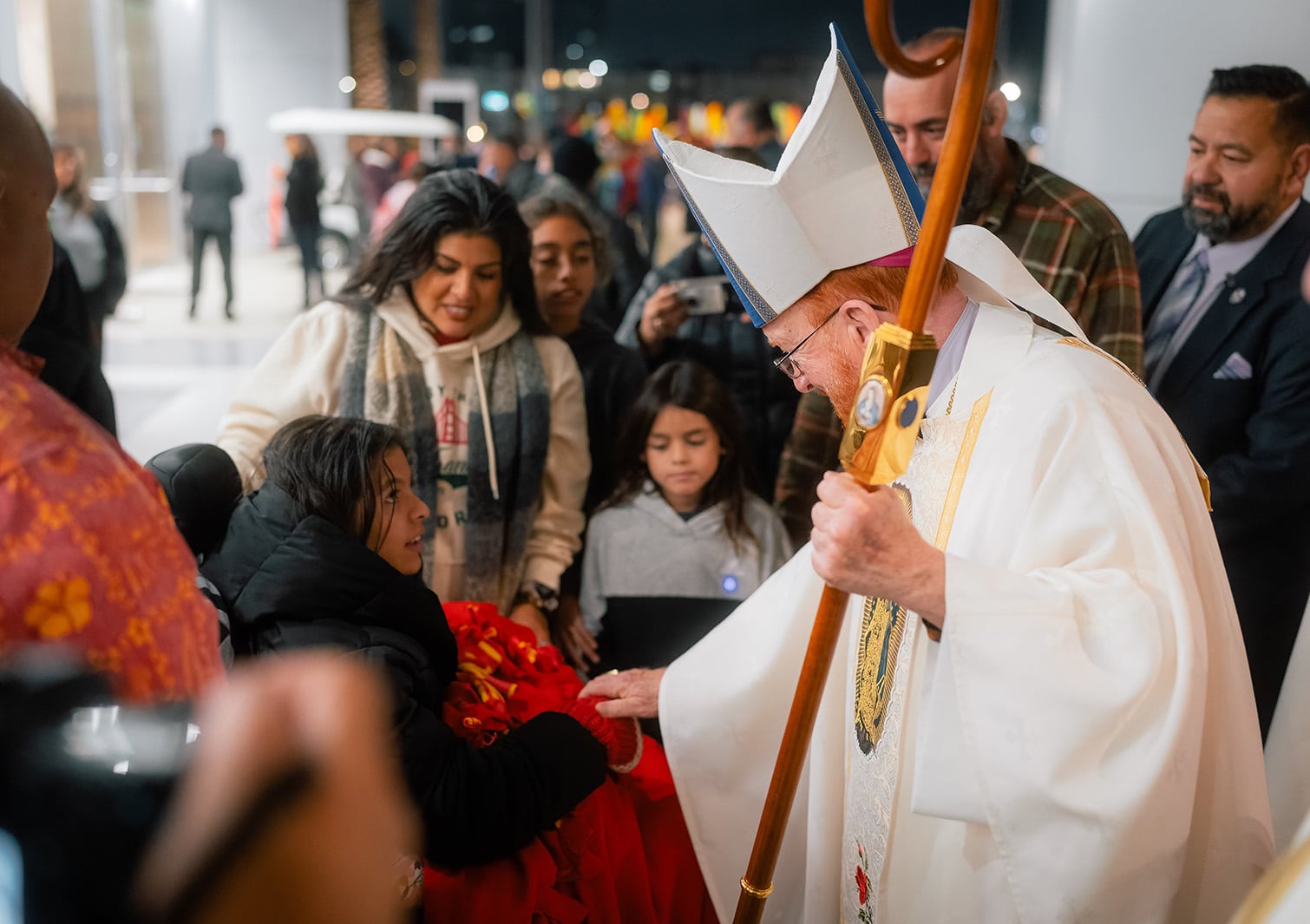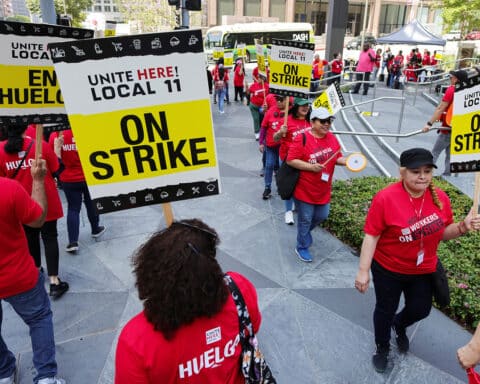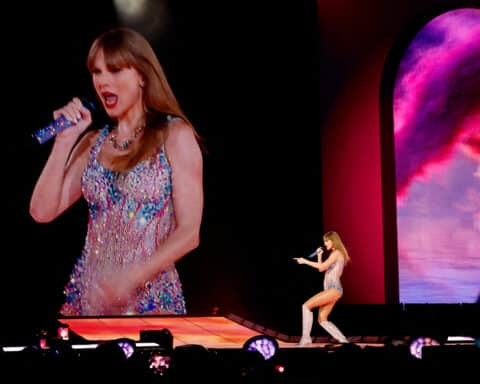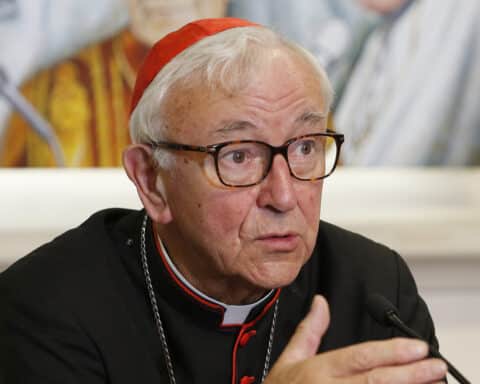As pastoral head of the 11th largest diocese in the United States, Bishop Kevin W. Vann of Orange, California, works to meet the social, economic and spiritual needs of a diverse Catholic population. Bishop Vann, ordained a priest of the Diocese of Springfield in Illinois in 1981, also served as bishop of the Diocese of Fort Worth before moving to Southern California. He recently spoke with OSV News’ Charlie Camosy.
Charlie Camosy: Can you tell us a bit of the personal journey that brought you, eventually, to the Diocese of Orange? Like me, you had your start in the Midwest but ended up in quite a different place.
Bishop Kevin W. Vann: Recently two nephews of one of our former parish priests presented me with his ordination chalice. He had just passed away, and I was honored to have received it. I served my first Mass for him in the cold dark early morning hours of February 1963. Before he passed away, I made a trip back to Illinois to see him to thank him for his example of prayer and devotion. I told him that my folks really loved him, as well as their contemporaries and friends in St. Agnes parish (in Springfield).
This is where I come from. It was his example — and my parents’. (They) lived their faith in a way that formed and animated their lives. My mother was a maternity nurse and my father a postal worker. This was the inspiration that set me, I believe, on the road that the Lord used to set me on my path. In addition, my mother’s older sister was a Dominican sister of Springfield, Illinois. She was a music teacher, and I took my first year of piano lessons from her. My brothers and I still speak with love and gratitude of my folks and what they taught us, and how important the parish and folks of St. Agnes were.
I think about my mother a lot, particularly around significant Catholic holidays.
Camosy: Let’s talk about holidays, especially as we are now solidly in Lent and can see Easter on the horizon. You serve a diocese with amazing cultural and ethnic diversity, one that really reflects much of global Catholicism. Can you tell us about what the holidays are like with all of these ethnicities and cultures present?
Bishop Vann: I remember when I was growing up, and even into my adulthood and ministry, how the liturgical seasons seemed to follow each other in neat, orderly divisions. But life and ministry here in the Diocese of Orange, and in Southern California, I found to be quite different — more like a procession of seasons, one flowing after another.
Let me explain: The Christmas season here does not really finish until later on in the month of January, because of the Filipino celebration of the infant Jesus, entitled the “Santo Nino.”
In these celebrations a statue of the infant Jesus, clothed in red and gold, is carried in a procession into Mass. And, not only that, all who come to the Mass bring their own statue of the “Santo Nino” that is carried into Mass with singing and dancing.
The Santo Nino celebrations soon give way to the Lunar New Year celebrations with “dragon dancers” outside of Mass, and reflections on what year it is (this year is the “Year of the Dragon”). Masses are celebrated with prayer and hopes for the Lunar New Year. The colors for the Lunar New Year are red and gold as well.
After Lunar New Year, as you say, the Season of Lent is upon us, but before that comes “Carnival,” and then Ash Wednesday. Most of our churches, and especially the cathedral, are beyond even our capacity crowds.
A distinct feature of Lent here (and elsewhere) are our Friday “Fish Fries” that are at capacity and beyond. They are moments of joyful gathering as parish families, and even fundraising. I try to go to one each Friday evening, which gives me a chance to meet and visit with our parishioners. Often they are followed by Stations of the Cross.
Camosy: As we head into the heart of the 2024 election cycle, I can’t resist asking whether a diocese so animated by this melting pot of global Catholicism can resist some of the political assumptions that have infected so much of the U.S. church? Does this diversity have anything to teach the rest of us?
Bishop Vann: Frankly, I’m exposed to this great cultural mix of the global Catholic faith, a faith practiced by people and families in ways that are a welcome relief from (and an antidote to) the polemics and polarization of the Anglo Saxon cultural and political milieu that infects (as you put it) and influences so much of our life and mission. Being with, and praying with, these other cultures and groups reminds me of what is really important and central to our faith.
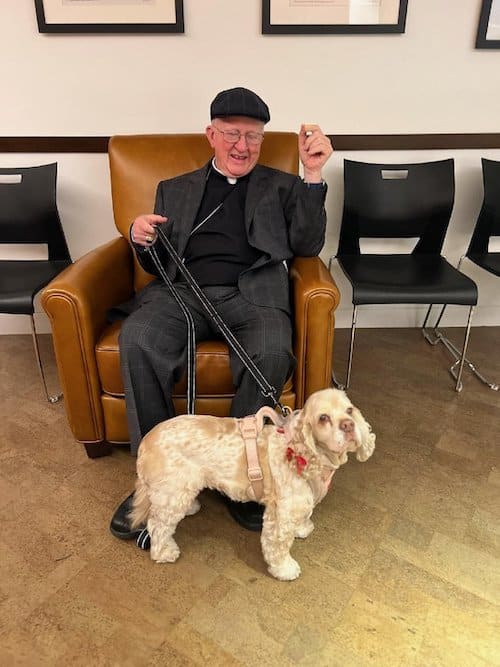
Camosy: OK, these Q&As with bishops are meant to give us a glimpse into who you are as a person, quite apart from your formal role as bishop. What do you do for fun? Or what do you do just to “veg out and wind down” after a long day?
Bishop Vann: I have such a love for dogs, especially Gracie, my cocker spaniel of 11 years. I love to sit in the front room of my home where some of my nativities are pictured. And I would be remiss if I didn’t mention my 1922 Cable Nelson player piano and some of the rolls. I have had this since 1967, and it has been restored three times! I bought it as a high school student, and I used to make a hobby of repairing and rebuilding these instruments. I also play the piano and sometimes play along with the machine. All of this reminds me constantly that, as St. Augustine said, “Music is a fair and glorious gift of God!”

